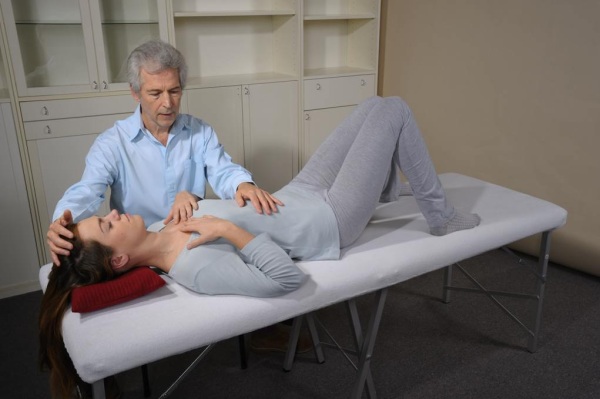Thomas Attlee’s book “Face to Face with the Face” explains how Cranio-Sacral Integration can help a wide range of persistent and painful conditions involving the face and the cranial nerves – from trigeminal neuralgia, sinusitis, hearing loss and TMJ syndrome to autism, chronic fatigue and polyvagal disturbance – through a deeper understanding of quantum levels of health and the biodynamic forces which underlie the body’s inherent healing potential.
craniosacral
Essentials of Cranio-Sacral Integration (and case studies)
In this blog post by Thomas Attlee, author of Face to Face with the Face, Attlee explains the ‘Essentials of Cranio-Sacral Integration’, providing an overview of the key points, and providing three case studies: Tooth, Jaw and TMJ Pain; Hearing Loss and Trigeminal Neuralgia.
Higgs-boson:
In 2013 Professor Peter Higgs received the Nobel prize for a concept he first proposed in 1964 and for which the experimental proof was finally provided at the CERN laboratory in Switzerland in 2012. Professor Higgs postulated that there is an invisible field pervading the whole universe.
Within quantum physics it has now been established that there is a universal field, a unifying matrix within which everything exists and interacts – every galaxy, star, planet, solid object, living being, molecule, atom, subatomic particle – a field from which particles take their mass.
In the quantum model of cranio-sacral integration, we also perceive a universal field or matrix, within which life on earth has come into being, and each one of us exists as an individual matrix within this wider matrix. We are formed embryologically, developed, maintained and sustained by the biodynamic forces within that field, and every cell, atom, and subatomic particle within our body is an integral part of that wider field.
A Feminine Approach to Bodywork?

by Liz Kalinowska and Daška Hatton
A feminine approach to therapeutic bodywork has interested me since I took my first tentative steps along this path sometime in the mid 1990’s. I noticed that in my field (Alexander Technique / Craniosacral Therapy) most of the practitioners are women and yet most of the courses and books on the subject are written by men. The feminine viewpoint is and always has been different, with a distinctive voice and function. Although a massive over-simplification, the masculine approach tends to focus on techniques and results, while the feminine may naturally relate more intuitively and compassionately. Continue reading
Singing Dragon Bodywork Catalogue 2013
Click on the box below to browse through our online Bodywork catalogue. Including titles on massage, reflexology, shiatsu, cranio-sacral therapy, yoga, and aromatherapy, this is an indispensable resource for anyone who cares for the human body.
All the titles, author names, and covers are interactive; just click on them to be taken to the book or author page on the Singing Dragon website.
The cranio-sacral therapy spectrum
By Thomas Attlee, founder of the College of Cranio-Sacral Therapy and author of Cranio-Sacral Integration
There are various approaches to cranio-sacral therapy, partly reflecting the development of the therapy over the years, partly suiting individual practitioners and differing styles. I see all these different approaches as part of a spectrum, complementary rather than antagonistic.
All cranio-sacral therapy is subtle. The spectrum ranges from the extremely subtle, with minimal physical input from the practitioner – an approach sometimes described as biodynamic, primarily concerned with creating a therapeutic space within which the forces of nature can enable profound healing, rather than actively doing anything.
The other end of the spectrum is still very subtle by any conventional standards, but may involve more physical input and intention from the therapist and a wider range of resources – an approach sometimes described as biomechanical (although the term mechanical is misleading in this context as it is not a mechanical process or even a particularly physical process, and is still a very subtle gentle energy-based approach).
The whole spectrum is valuable and all aspects of the spectrum can be integrated together for optimum effectiveness. This integrated approach is the approach that I teach at the College of Cranio-Sacral Therapy, and is the basis of the book Cranio-Sacral Integration.
The value of an integrated approach:
An integrated approach embraces the whole spectrum and enables the implementation of a wide range of resources, rather than laying down a particular method. The needs of each individual will inevitably vary and different circumstances will benefit from different responses. Just as a patient may sometimes benefit from orthodox medicine, osteopathy, homeopathy, or acupuncture, so within the field of cranio-sacral therapy, patients may respond to various levels of engagement and benefit from different aspects of the spectrum.
Cranio-Sacral Integration adopts an open flexible approach, developing a broad understanding of the value of different styles, and consequently providing the resources to respond effectively to each individual according to his or her needs.
Practitioner ‘presence’ is the key:
Ultimately, the most significant element in the therapeutic process is the ‘presence’ of the practitioner, the qualities that he or she brings to the therapeutic interaction. This is relevant for any practitioner, or doctor, or anyone working in health care, but it is particularly relevant in Cranio-Sacral Integration where we are working with subtle forces and quantum energies. The whole process of Cranio-Sacral Integration is an interaction between patient and practitioner, a process of entrainment, and the profoundly therapeutic presence of the practitioner plays a vital part in this interaction and in the therapeutic responses within the patient, and is therefore a crucial element in Cranio-Sacral Integration.
The way in which each practitioner develops these qualities is of course individual. There is no particular method that is suitable for everyone. But Cranio-Sacral Integration is much more than mere knowledge, technique and practical application. And the training in Cranio-Sacral Integration therefore involves, as a fundamental element, the development of these therapeutic qualities and practitioner presence, in order to enable the most profound healing of body, mind and spirit.
Copyright © Singing Dragon 2012.
